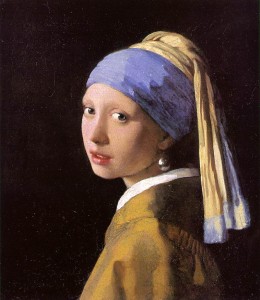by Hope Schaeffer
Robert Lowell (1917-1977) was an ardent political activist and taught at Boston University but is perhaps best known as one of the initiators of the confessional poetry movement during the mid-20th century. Unlike more traditional poetry with subject matters such as historical events or spiritual themes, confessional poems focused on the author’s personal life and struggles, often including mental or physical illness, sexuality, and individual feelings. Born into an affluent family of the Boston establishment, Lowell cut ties with his father during his student days and left to study under the poet Allen Tate. Though passionate about both history and politics and the creator of a successful writing career, Lowell suffered from manic depression throughout his life. Institutionalization in mental hospitals and a string of troubled relationships also featured in his life and influenced his poetry.
According to the biography on www.poetryfoundation.org, Lowell’s early poetry followed strict and complex patterns and integrated much use of traditional mechanisms such as meter and rhyme. However, his later poems in the confessional style were much freer in form. Rather than straying completely from traditional themes however, Lowell continued to incorporate history and other broad issues and perspectives into his poetry, combined with deeply personal convictions and feelings. This is the case in his poem “Epilogue,†in which Lowell uses historical allusion alongside personal experience to communicate his dilemma: an inability to realistically and meaningfully capture his experiences in written form. Lowell also comments upon the irony that portraits, whether in poetry, photograph, or painted form, are meaningless without the identity of the person behind them, yet these copies of reality that fall short of capturing the true person will likely remain after they cease to exist and have a known identity.
“Epilogue†consists of one stanza made up of 23 lines. In general, the poem does not use a regular meter or rhyme scheme, although lines 7 and 8 end in rhyme: “light†and “write,†perhaps intended to highlight two important themes of the poem. The first line is the only line that uses a regular meter. In this line, Lowell introduces two formalities of traditional English language poetry, “plot and rhyme,†and in the second line abolishes their usefulness to his work. Interestingly, meter, although not specifically named in this first line, also disappears thereafter. The line lengths vary quite a bit, from the two words of line 14 to sometimes full clauses or even sentences such as in line 15. There is not much alliteration or assonance that stands out in this poem, other than in line twenty, towards the close of the poem: “We are poor passing facts.†Here, I find that the alliteration of “poor†and “passing†serves to punctuate the bitterness with which Lowell recognizes his and his fellow humans’ transience, and the poem could be read as if one was almost spitting out those words.
“Epilogue†contains a fair amount of figurative language, however. In lines 8 through 13, Lowell uses a simile to compare his writing to a badly taken photograph: “lurid, rapid, garish, grouped,/heightened from life,/yet paralyzed by fact†(ll. 11-13). In lines 16 through 19, Lowell uses metaphor to explain his respect for the skill of the 17th century painter Johannes Vermeer, famed for his emphasis on and ability to capture light: “Pray for the grace of accuracy/Vermeer gave to the sun’s illumination/stealing like the tide across a map/to his girl solid with yearning†(ll. 16-19).
I interpreted this metaphor about the “tide across a map†as another description of attempts to codify or represent real things in artistic rendition (l. 18). The “tide†could refer to the representation of the ocean on a typical map. The generally blue solid area surrounding the land masses on a map is supposed to represent the ocean. In reality, the water of the ocean is in constant motion, although on the flat surface of a map one does not see any motion. Similarly, many of Vermeer’s paintings attempt to capture light filtering into or bathing a room. In reality, light beams move at high speed through our atmosphere, although a painting or photo can only capture a image at a single, specific instant in time. Like the ‘water’ on a map, the light in a painting cannot literally move as it does in reality. In line 16 Lowell expresses his desire to create art as realistic and moving as Vermeer’s.
While the punctuation leaves the meaning of line 18 somewhat ambiguous, I take the phrase “solid with yearning†to modify Lowell’s prayer in line 16. At its most basic, a summary of this poem could be that Lowell is frustrated by his human inability to convey reality accurately from his personal perspective—he is “yearning†for a more accurate result. Underneath this, however, seems to be another layer of “yearning.†In the next four lines: “We are poor passing facts,/warned by that to give/each figure in the photograph/his living name†(ll. 20-23), Lowell continues his comparison of his work writing poetry to photography. Lowell seems to mourn the fact that it is nigh impossible to completely capture a feeling or a moment in time, that the author of the artwork cannot perfectly convey his feelings to another human being, and that in the end, what will last is the bad copy, the warped version of reality. Ultimately, time cannot truly be stopped and the full depth of a person cannot be captured in photos or a poem. What validates the meaning of the copy or imitation is the existence of the true subject, yet since reality is continually in a state of change, the copy will remain and eventually lose its meaning. This fact is the true source of Lowell’s yearning, and indeed for the entire human race.
Hope Schaeffer is a senior in the English Dept. of Truman State University in Kirksville, Missouri, and currently an exchange student at Chukyo University.
Â
Â
Â


